Generosity and Religion—Making the Connection
Ward Brehm is a philanthropist, businessman, and on the board of the United States African Development Foundation, which serves the “poorest of the poor” by making direct investments into enterprises run by Africans. He is the author of the new book Bigger Than Me. The following is excerpted from remarks he made at the National Prayer Breakfast and an Opportunity International event.
The best way to aid the poor is through job creation and steady paychecks—the only sustainable way of making sure they will not be impoverished in the future. To achieve this, however, many of the poor will require help. They need, as the old saw holds, to be taught how to fish. They also need ponds from which a living can be angled.
For those things, the assistance of other people who are motivated to be generous will often be necessary. So what motivates people to be generous? Why would people share their resources with others?
Well, the most common and powerful force in that direction is religion. It’s easy, though, to become disconnected from the encouragements to generosity that faith holds up before us. I know. I am a recovering Type-A controlling businessman. For a long time, the only thing on my personal radar screen was me.
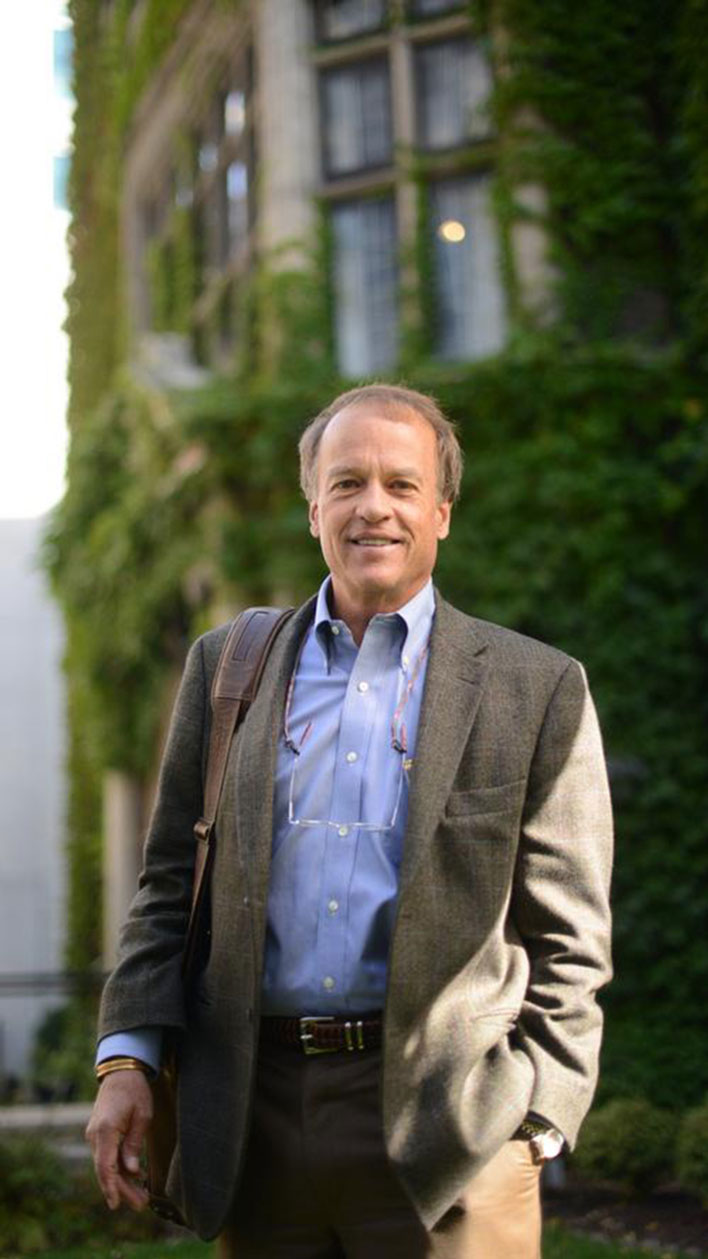
Ward Brehm was cajoled into visiting Ethiopia, and left a changed man.
Eventually, though, the religious call to be generous reached even me.
They say that if God wants to get your attention he will toss a pebble into your life. If that doesn’t work, he’ll throw a rock. As a last resort he’ll heave a brick! Africa was my brick.
In 1994, in the Los Angeles airport, I bought a copy of Stephen Covey’s book The Seven Habits of Highly Effective People. I didn’t buy it to learn anything, but just wanted to make sure he got them all right! As I plowed into the book I was intrigued by Covey’s notion that identical sets of facts can mean very different things to people because of their worldview. I wondered how worldviews change.
At the time, Somalia was in the news. Countless people there were dying from starvation. I felt no real connection to this humanitarian crisis, though. My radar screen was full.
One week later I made one of my occasional stops at church. My pastor, out of the blue, took me aside and said, “Ward, I’m going to Africa in two months, and I would like you to go with me.” I told him “No.” I didn’t have the time or interest.
He said, “Would you at least pray about it?” I looked at him and said, “You’re the pastor; you pray about it. I will think about it, but suspect my answer will still be no.”
He must have prayed hard, because two months later, I found myself in the Minneapolis airport with a ticket to Ethiopia in my hand. I was surrounded by—for lack of a better word—church ladies. And they were hugging me. Then someone suggested we pray before we departed, so I found myself outside Gate 8A, holding hands with a group of strangers. At that point I uttered my first heartfelt and sincere prayer: “Lord, don’t let any of my clients see me!”
And then we flew 12,000 miles to Africa, and a million miles from my comfort zone. I saw the emaciated faces of famine, families shattered by civil war, children doomed to blindness for the lack of a 50-cent medicine. I had my heart broken over and over.
On one occasion, I was sleeping in a hut and awoke to see a little boy peeking through the door. I noticed he was staring at my stash of power bars. Suddenly he snatched a bar and ran away. “Kids are the same everywhere,” I thought. Then I stepped outside the hut and found the little boy kneeling over his two-year-old sister, who had a terribly distended stomach, feeding her tiny pieces of protein.
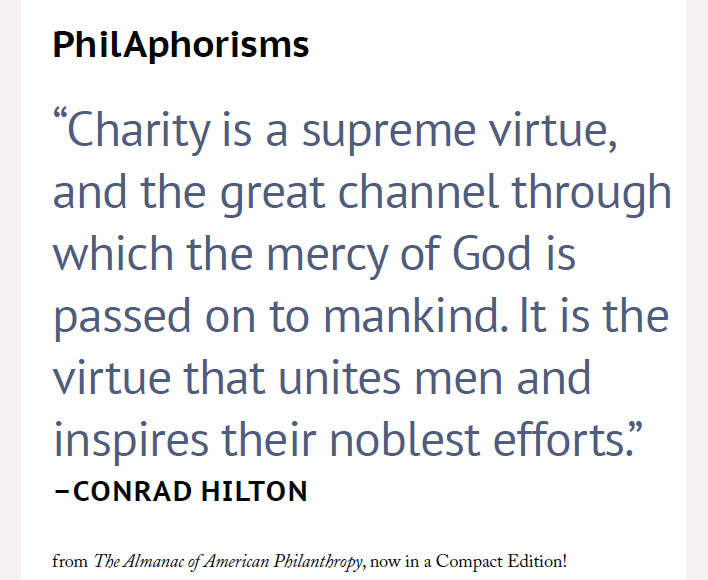
It’s often only when things fall completely apart that we turn to God. It’s the rogue events in life: death, cancer, business failure, addiction, divorce, crises. These things drop us to our knees. All across the world, and right here in America, there are people for whom things are falling apart. They are living in crisis mode.
God is often all these folks have. Except that God commands us, their neighbors, to love them as well, with all our hearts. The greatest hope for those in misery often ends up being helpers and leaders that God has inspired to take their side.
Jesus said that in the final reckoning, he will tell the righteous, “I was hungry and you gave me something to eat, I was thirsty and you gave me something to drink, I was a stranger and you invited me in, I needed clothes and you clothed me, I was sick and you looked after me, I was in prison and you came to visit me…. Whatever you did for one of the least of these brothers and sisters of mine, you did for me.”
Of course, in our quest to be helpful, we can rob the poor of their dignity. In order to be of help to the poor, we need to understand them. They are not a group, or a separate species. They are identical to us in their hopes and dreams.
Interestingly, when givers and volunteers engage with people in need in a knowing and loving way, they find that they themselves are changed, and able to see relevance and meaning much bigger than themselves. Deep down, I believe, most people would love to have God change their lives. And here’s the thing: He will if asked.
The changes that result when you let religiously inspired generosity become part of your life may feel scary at first. Ultimately, though, we are ennobled. We are able to live a life of purpose instead of just rumbling on by default.
I was talking with a Hindu friend and he asked me a very simple question: How does one obey the first and most important commandment of the Christian faith—to love God with all your heart and soul and strength? I struggled for an answer. Then I realized that right after delivering that first commandment, Jesus offered a second one he described as “very like” the first: “Love your neighbor as yourself.”
Click. The real and tangible way to demonstrate the love of God is to love your neighbor. When your faith moves you to help another person, you are responding to the deepest human questions. Is life more than just a series of random events? Does the universe have meaning? How do we know God is good? How does he show his children that he cares for them?
The answer to these questions is astounding.
The answer is—us! Our charitable actions on God’s behalf are proof of his presence and love.
And here’s something even more astounding: God has no Plan B.
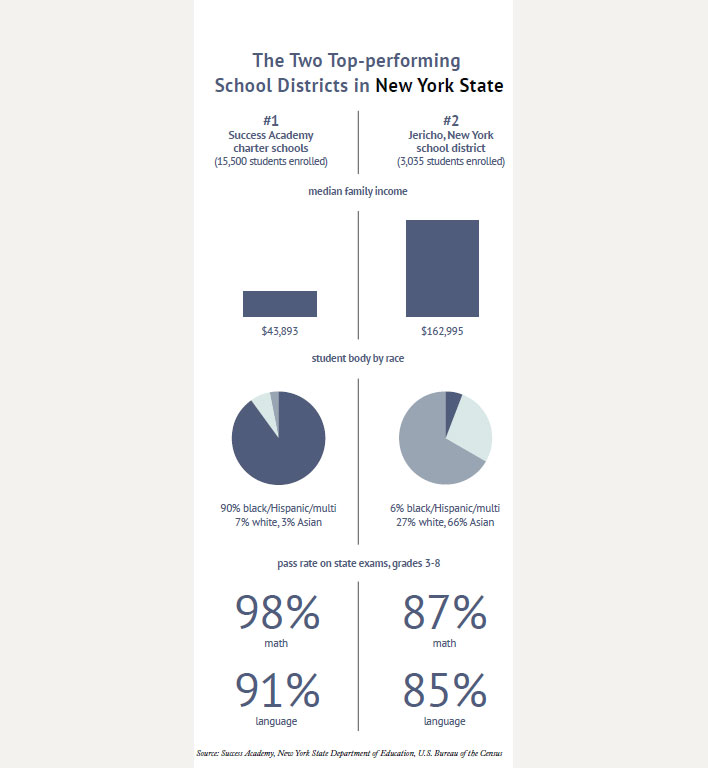
Arms of Comfort
There are about 3,000 crisis pregnancy centers in the United States, organizations that offer various forms of support to pregnant women seeking an alternative to abortion. Most of them, though open to all clients, have some sort of Christian underpinning. One of them is Jewish.
In Shifra’s Arms was founded ten years ago by Erica Perlman, a young Orthodox woman who was haunted by a friend’s experience going through a traumatic abortion because she felt she had no other choice. While welcoming all comers, the organization is specifically targeted to the needs of Jewish women. Amidst the many Jewish support groups that facilitate abortions, it seemed to Perlman that an obvious niche wasn’t being filled.
Perlman assembled a board from across the political spectrum to focus practical help on women who want to carry their babies to term. She named the group for the Hebrew midwife Shifra, who saved Israelite boys from the Egyptians. The lean operation runs on about $100,000 a year of private donations, with executive director Perlman (also an at-home mother of four) and other leadership volunteering their time.
The women who show up are much more varied than the young, single clientele Perlman was expecting. About half of them are married—struggling with finances, a rocky relationship, or trouble with their existing child-care load. Some are older would-be single mothers facing intense pressure not to give birth, or in abusive relationships, or homeless. Whatever the situation, the counselor hears them out and offers targeted assistance and referrals, as well as a supportive connection that continues through the first year of the child’s life. Clients who choose adoption are linked up with a reputable Jewish agency.
“No one speaks about it,” writes former board member Lori Prashker-Thomas, who felt utterly alone when she placed her first daughter for adoption. “There was no Jewish organization at the time to help me through anything.” She joined In Shifra’s Arms to become a caring sounding board for other women in her shoes.
One anonymous client lauds the volunteer at In Shifra’s Arms that she worked with as “an angel sent…to help me get through this very hard time and learn to love myself and my life again…. Thank you for the ongoing support you are providing.” This woman named her baby Eliana—“my God has answered me.”
Gem of a Donation
In the late 1980s, three sweating, scrabbling prospectors in a rural corner of Brazil dug up one of the greatest natural treasures ever seen by human eyes: a single massive crystal of the precious mineral known as aquamarine. It was three feet long and weighed a hundred pounds. Aquamarines the size of a marble are rare enough to cost thousands of dollars. And this one was not only huge but also of an extraordinary quality: clear and deeply colored. Aquamarines are prized for their green-blue hues. Their very name translates as “sea water”—and in this case you should envision hot Caribbean blue rather than Coney Island green.
The lucky prospectors knew they had found something extraordinary, but even with three of them, something unthinkable happened in the process of wrestling the 100-pound brute out of the mine: They dropped the crystal. It broke into three pieces.
Two of the chunks were sold and cut up into faceted stones for rings and necklaces worth millions of dollars. The third chunk, the biggest, posed a dilemma. Even with two parts broken off, this astonishing piece of perfect aquamarine was a six-sided shaft two feet long and six inches in diameter. That made it the biggest aquamarine gem in the world. It’s unlikely a finer specimen will ever surface again. It seemed a crime to cut that perfect column of crystal into a pile of baubles to be mounted in expensive cocktail jewelry.
So a consortium of gem professionals purchased the remaining pillar of aquamarine and brought it to an extraordinary German gem cutter who was making a name for himself by carving large specimens of precious stones into artistic sculptures. He studied the crystal for four months before he touched it. Then he spent six months cutting, faceting, and polishing it. He would only let himself work on it for two hours per day, because a single slip of the hand could shatter the piece.
By the end of 1992, he had created an incredible aquamarine obelisk, about two feet tall and weighing five pounds. It’s roughly the shape of the Washington Monument, but in an otherworldly transparent neon blue, with starbursts carved into its back to reflect light. It was dubbed the Dom Pedro aquamarine.
This one-of-a-kind gem was displayed in a few international cities, but by the late 1990s the partners who owned it wanted to get their money out of the project. They tried to sell it to the Smithsonian Institution for $10 million. The Smithsonian curator of gems had his breath taken away by the piece, but explained that the Smithsonian couldn’t ask Congress for $10 million to buy a crystal. Its collection was built up from donations made by private citizens.

The Dom Pedro aquamarine, saved for the public by Jane Mitchell and Jeff Bland.
The Brazilian ownership partner began to discuss cutting up the 10,000-carat gem into hundreds of jewelry stones that could be sold for tens of millions of dollars. At that point, a mineral collector in the U.S. named Jane Mitchell and her husband Jeff Bland got involved. They had just sold for millions of dollars the surgical-tool company they’d built up. And like many successful and generous American businesspeople, they wanted to put some of their proceeds to work for the public good.
Mitchell and Bland were horrified when they heard the Dom Pedro might be chopped into jewelry stones. She thought, “Oh no! You can’t cut that up!” The couple decided to buy the aquamarine. Not for themselves, but to donate it—to make sure this natural wonder would be protected, and made available for the public to marvel over and enjoy. “We felt it should strike as many people as could be, because that’s how we felt when we looked at it.”

Jane Mitchell and Jeff Bland
In 2011, Mitchell and Bland presented the Dom Pedro aquamarine to the Smithsonian Institution, as their gift to the nation. It is the most spectacular stone of its kind on the planet, ten times the size of the next runner-up, and of dazzling quality. Indeed it is one of the rarest and most beautiful gems ever seen. “If not for them it wouldn’t be here today,” says Smithsonian gem curator Jeffrey Post.
And it is now displayed for all visitors to our nation’s capital, inside the Smithsonian’s walk-in vault, right next to the Hope diamond. All thanks to two businesspeople with an eye for beauty, and a willingness to put up millions of dollars of their own money to make sure one of the world’s great gifts of nature would not be destroyed.
Fighting for Pygmies
When heavyweight MMA fighter Justin Wren steps in the cage to fight, he is introduced with his nickname “the Big Pygmy.” This unusual moniker was lovingly bestowed on him by the Pygmy people of the Congo—a sign of their affection and appreciation for his indefatigable efforts on their behalf.
When Wren learned that some of the Mbuti Pygmies in the Congo were being exploited as slaves, he felt called to do something about it. Since 2011 he has spent considerable time with the Mbuti, including one stay that spanned a year. He lived as they did, sleeping on the floor, and hunting and gathering as they have always done.
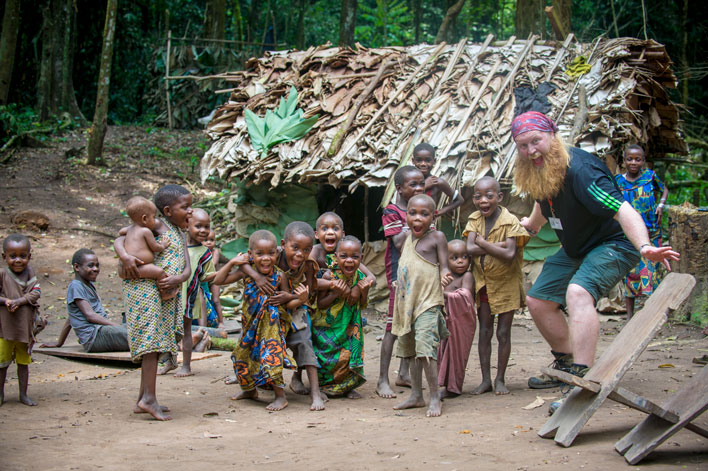
MMA fighter Justin Wren found his philanthropic passion among the Pygmy people.
Wren’s nonprofit Fight for the Forgotten has since helped the Pygmy people buy land, access clean water, and free members from economic bondage. The neighboring tribes who kept them enslaved, known as the Mokpala, were themselves very poor. So Wren coordinated aid and the drilling of needed wells for both the Pygmies and the Mokpala. “If you hate one side and love another it doesn’t work,” he says.
The Pygmies were also taught sustainable farming practices, and now produce corn, beans, cassava, and banana. This benefits their health and provides revenue when they sell excess crops at market. There are now approximately 1,500 free Pygmy people living on 3,000 acres spread across ten different villages that they legally own.
Wren has expanded his charity work to include an anti-bullying initiative in the U.S. He has spoken at many schools over the years, sharing his personal experience of being bullied while growing up. It was not until he discovered wrestling, and later martial arts, that he was able to build his self-esteem and confidence. Fight for the Forgotten is partnering with equipment supplier Century Martial Arts to provide a character-development curriculum to martial-arts academies that provides harassed young people with coping strategies.
Wren’s charitable strategy is simple: “No act of kindness, no matter how small, is ever wasted.” He finds his nonprofit work life affirming and the most rewarding thing he does. “Nothing compares to the celebration that happens when a village gets clean water.” —Allison Futterman
Just for Fun
John Plachetka received a mailer from his alma mater announcing plans for an exterior beautification project, and calling for alumni contributions. He phoned the development office and inquired about funding the entire exterior renovation project, including an endowment for maintenance. He also asked about the potential for a quirky piece of art.
And when he finally saw his 12-ton mortar-and-pestle sculpture sitting in front of the College of Pharmacy building at the University of Illinois at Chicago, he flashed a wide grin.
“The UIC campus is no-nonsense and serviceable,” Plachetka notes. But his $500,000 gift allowed some outdoor art “celebrating a symbol of pharmacy at one of the nation’s top pharmacy schools. And, to steal a line from Chevy Chase, ‘Who wouldn’t want to see the largest mortar and pestle in the Western Hemisphere?’ ”
This offbeat artifact has quickly become part of the college’s identity. Students place carved pumpkins around it during Halloween. They decorate it for Christmas.
“There’s a serious element to the gift,” says Plachetka. “It improves the college’s image. But life’s too short to be serious all the time. When you see this sculpture, you can’t help but smile. It’s a reminder that giving can be serious and fun at the same time.”
—Daniel P. Smith
A Walk Through Some Nation-changing Churches
Giving thanks for Boston’s charitable houses of worship
I’ve just spent time in Boston, visiting some of America’s earliest houses of worship while researching the many contributions made to charity and civil society by our nation’s churchfolk.
I started at the Old North Church. That was Paul Revere’s congregation, and its steeple was where the church sexton hung two lanterns one evening in 1775 to warn patriots that British troops were heading across the Charles River to seize American leaders, arms, and ammunition hidden north and west of the city. Revere and other riders spread the warning as far as New Hampshire, so when the 700 redcoats descended on Lexington, instead of finding a sleeping village they ran up against an armed militia. By the end of the day, only 400 British fighters were left.
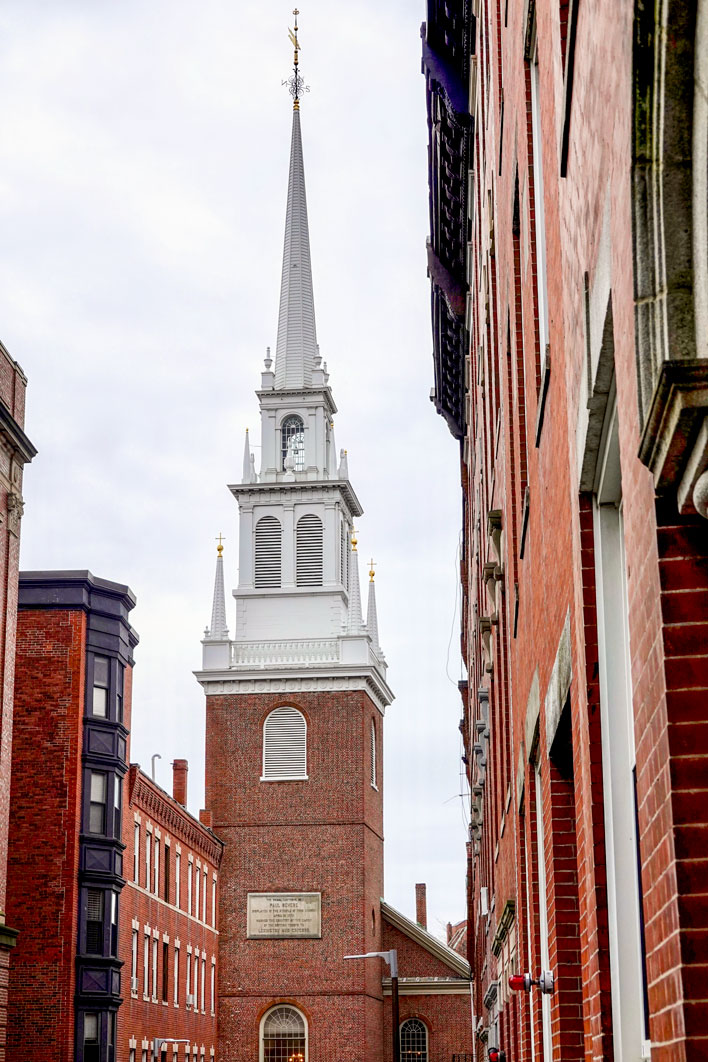
Old North Church, home to Paul Revere and countless other doers of good.
Old North Church continues today as a very active Episcopal congregation (also known as Christ Church), meeting right in their original sanctuary built in 1723. One of the most unusual features of their worship hall is the set of four hand-carved and brightly painted angels that sit on pedestals arrayed across the church balcony. Fashioned in Belgium in the early 1600s, these statues were headed for a church in Quebec when the French ship carrying them was seized in battle by a ship captain who was a member at Old North. He donated the angels to his home parish, and the church record book shows that the vestrymen, quote, “voted that…ye…four cherubims…taken by ye said vessel…be placed on ye top of the organ.” And there the gifted goods sit to this day, quite beautifully.
Just behind them is the oldest American-built pipe organ, another present from congregation members. It still plays at every service. And up in the church’s steeple are a set of tuned bells cast in England and installed at Old North in 1744 after an energetic fundraising campaign that collected private donations ranging from a few pence to many pounds.
The smallest bell is inscribed, “This peal of eight bells is the gift of a number of generous persons to Christ Church, in Boston, year of our lord 1744.” Bell number three carries the names of four of the major givers. And the side of bell number two reads poetically: “Since generosity has opened our mouths, our tongues shall ring aloud its praise.”
One of the first official ringers of these donated bells was the 15-year-old Paul Revere. They’re now the oldest working chimes in America.
After visiting Old North Church I walked a dozen blocks or so to King’s Chapel, which had completely different origins. The British Royal Governor, rather than donors, founded it in 1686 to be the first Anglican church in New England. At that point New England was full of Puritans who had dragged their families across a stormy ocean to get away from the haughty demands of the Anglican church, so not one Bostonian would sell the governor land to build his chapel on. He was thus forced to erect it on the public burying ground, which belonged to the king.
When the time came to replace that first church, the tight plot required that the new stone structure be built literally around the existing wooden church. Only when the larger building was complete was the wooden frame disassembled, and its pieces passed through the stone windows. Not wanting to waste the original building, the British shipped all the wooden parts up to Nova Scotia, where they were reassembled into an Anglican church there.
Though it was now lovely in stone and pillars, the stubborn New Englanders still refused to embrace this house of worship that was pledged to the crown. So King’s Chapel sat vacant during the American Revolution. Bostonians wouldn’t even pay lip service—they referred to it simply as the “Stone Chapel.” Today, it operates as a Unitarian church.
Just a stone’s throw away sits another historic religious organization. The Park Street Church was formed in 1804 by a group of evangelicals seeking more orthodox Christian services. It hosted one of America’s first Sunday Schools. It became a leader in funding Christian foreign missions. The congregation dispatched missionaries to many overseas locations, and continues to support schooling, economic aid, health services, and Christian teaching in poor lands.
The Park Street Church also became a hub for religious arts. Many beloved hymns were debuted here. Our country’s second-oldest musical organization, the Handel and Haydn Society, was formed at the church. And to make their love of God tangible, parishioners eventually created a landmark for fellow Bostonians by building a steeple that soars 20 stories high.
In the mid-twentieth century the Park Street Church took an important part in the rise of the modern evangelical movement. It joined in Billy Graham’s crusades, helped create the National Association of Evangelicals, and contributed to the formation of the Fuller and Gordon-Conwell seminaries. Its members started the first prison ministry in the U.S.
Today, the thriving congregation of 2,000 supports a Christian school for city children, a crisis pregnancy center, homeless ministries, an animal-rescue operation, language training for immigrants, and other charitable outreach.
Next, I crossed the Boston Common and Public Garden to visit another impressive religious institution. First Baptist Church occupies a magnificent stone cathedral created by the great architect Henry Hobson Richardson and great artist Frederic Bartholdi. This was the home congregation of Thomas Hollis, a successful colonial merchant who was so grateful to his adopted land for his freedom to worship as a dissenting Baptist that he endowed a professor of divinity position at Harvard. Then he endowed a chair in mathematics, and many other posts, ultimately making huge donations to our nation’s first college. Hollis thus invented the philanthropically endowed professorship, a centerpiece of turning America’s universities into the best in the world.
My tour of great houses of worship in Boston ended just down the street, where two more massive churches sit diagonal from each other. Trinity Church is an Episcopal congregation in another jaw-dropping Romanesque building designed by Richardson. And Old South Church is a massive stone pile with an equally massive history. Its congregation first gathered in 1669, and later played a major role in the American Revolution, including launching the Boston Tea Party. Early in the Civil War, more than a thousand men enlisted in the Union Army at Old South in just one day. And dozens of charities like the YMCA and the City Mission Society have sprung from congregational gifts and voluntary efforts.
Old South Church is also the traditional finish line of that other great charitable event, the Boston Marathon. So it was fitting that my stroll through some of America’s culture-changing sacred spaces ended there as well.
—Karl Zinsmeister
